All photos by Aaron B. Houdlette courtesy of the Maine Historic Preservation Commission
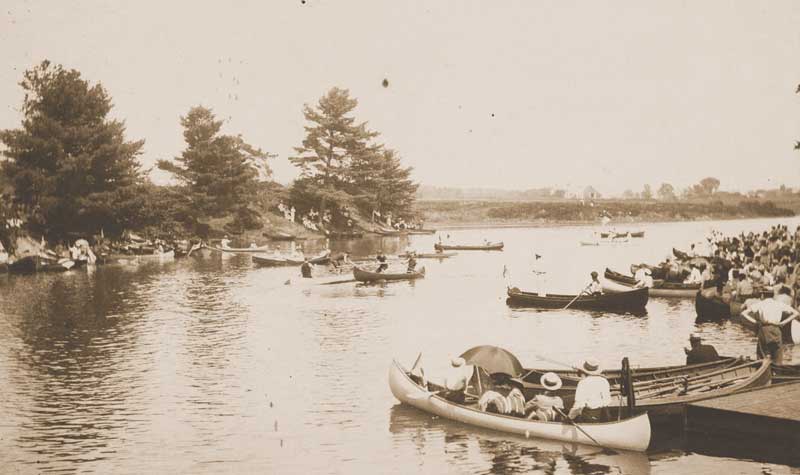 A crowd gathers on the shore of the Kennebunk River to watch a canoe race held by the Kennebunk River Club.
A crowd gathers on the shore of the Kennebunk River to watch a canoe race held by the Kennebunk River Club.
In the years following the Civil War, summer colonies developed along the Maine coast, from York Harbor to Grindstone Neck, in downeast Winter Harbor. Prominent among these was Cape Arundel, which was established by the Kennebunkport Sea Shore Company in 1873. As this summer resort attracted visitors, boating on the Kennebunk River became a popular pastime. In 1888, summer residents started the Lobster, Boat and Canoe Club. To stimulate membership, the club held canoe races on the river for men, women, and boys.
After successful seasons in 1888 and 1889, the Lobster Boat and Canoe Club became the Kennebunk River Club. In March 1890, the club contracted with the local builders Meserve and Nason to construct a 45- by 75-foot clubhouse from designs by architect Frederick W. Stickney of Lowell, Massachusetts. Opened on August 2, 1890, the Kennebunk River Club is a striking example of the Shingle Style favored for New England recreational buildings and summer cottages during the late 19th century.
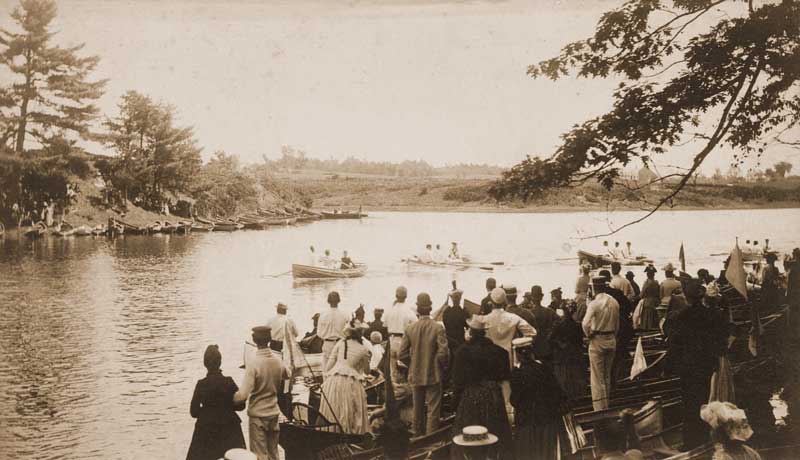 A crowd gathers on the shore of the Kennebunk River to watch a canoe race held by the Kennebunk River Club.
A crowd gathers on the shore of the Kennebunk River to watch a canoe race held by the Kennebunk River Club.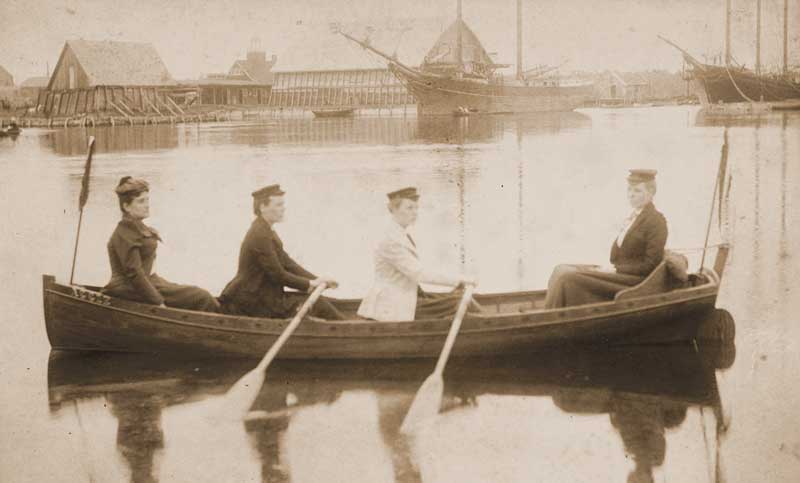 Women enjoyed canoeing on the Kennebunk River.
Women enjoyed canoeing on the Kennebunk River.
The river façade of the clubhouse presents a pleasing classical appearance, with its series of five small arches on the first story supporting a large second story arch that is encompassed by a broad gable roof.
On July 30, 1890, The Wave, a twice-weekly seasonal newspaper in Kennebunk, described the view from the second story: “The upper balcony commands a view of the shore from the piers, past Wells, York, and York Nubble, of the river itself inland, and the foothills of Mount Washington so that seashore and country are united in a view unsurpassed on the Maine coast.”
With its combination of social space and boat storage, the new clubhouse immediately became the focal point for summer activity on the Kennebunk River. Although several types of boats were used on the waterway, the canoe was the most popular, until it was replaced by motorized craft in the 1920s.
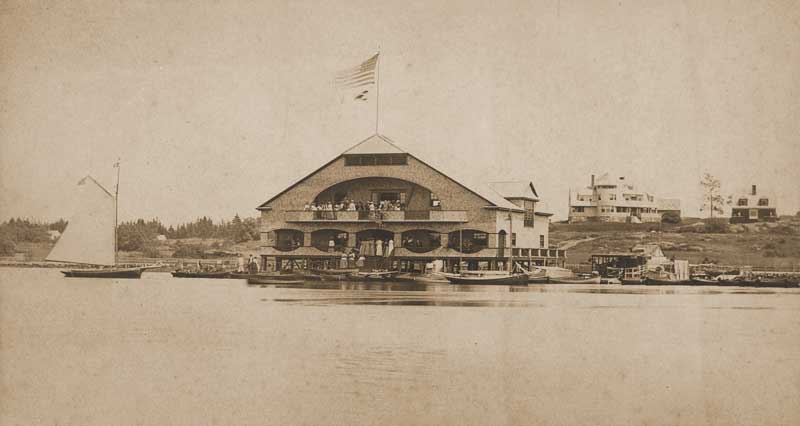 Opened in August 1890, the Shingle Style clubhouse of the Kennebunk River Club is still in use today.
Opened in August 1890, the Shingle Style clubhouse of the Kennebunk River Club is still in use today.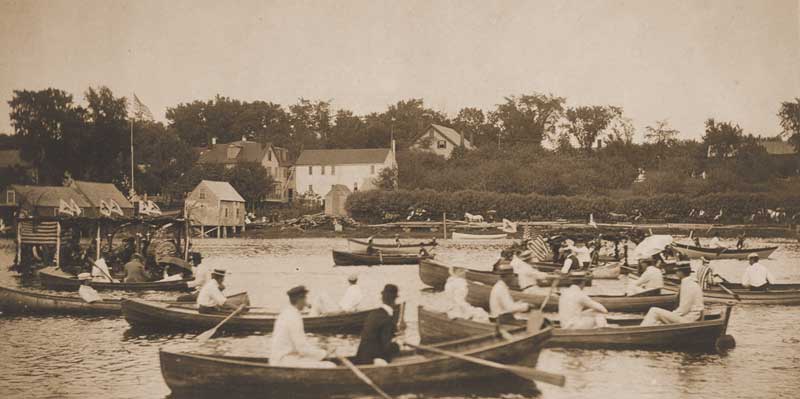 Summers, the Kennebunk River was often crowded with canoeing enthusiasts.
Summers, the Kennebunk River was often crowded with canoeing enthusiasts.
Beginning in 1888, Joseph Ranco, a member of the Penobscot Nation in Old Town, built birch bark and canvas canoes in Kennebunkport during the summer months. He was joined in this work by other Penobscot Native Americans, as well as members of the Passamaquoddy Nation from Pleasant Point in Eastport. These canoe builders also guided canoeing excursions on the river.
The Kennebunk River Club’s early boating activities are documented through photographs by Aaron B. Houdlette, who operated a summer studio in Kennebunkport during the 1880s and ’90s. Born in Dresden, Maine, in 1831, Houdlette was listed as a daguerreotypist in Richmond in the 1860 census. By 1875 he was working as a photographer in the Boston area, where he was active until his return to Richmond in 1898. There, he continued to practice photography until his death in 1909.
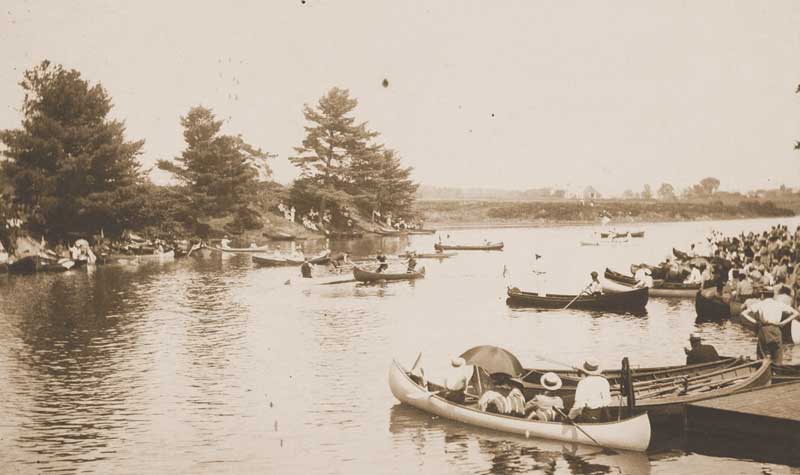 The Kennebunk River Club sponsored canoe races for men, women, and boys.
The Kennebunk River Club sponsored canoe races for men, women, and boys. Photographer Aaron B. Houdlette captured this delightful picture of a girl giving the family dog a canoe ride.
Photographer Aaron B. Houdlette captured this delightful picture of a girl giving the family dog a canoe ride.
While Houdlette’s Kennebunkport photographs record many aspects of late 19th century summer life, his views of canoeing on the Kennebunk River are especially engaging depictions of the sport.
Today the Kennebunk River Club retains a central role in the recreational and social life of the Cape Arundel summer colony. Tennis joined boating when the club absorbed the Arundel Casino many years ago. The historic boathouse is still actively used, having been restored in 2009. This distinctive Shingle Style building is a living landmark, having been recorded by the Historic American Building Survey in 1965 and listed in the National Register of Historic Places in 1975.
✮
Earle G. Shettleworth Jr. directed the Maine Historic Preservation Commission from 1976 to 2015, and he has served as Maine State Historian since 2004.
To learn more about Joseph Ranco
Read Benson Gray’s article “Joseph Ranco: An Early Master Canoe Builder” in MBH&H’s September/October 2023 issue #184.






